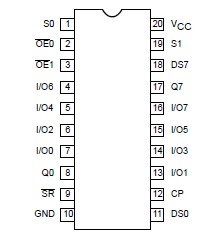N74F323D: Features: • Common parallel I/O for reduced pin count• Additional serial inputs and outputs for expansion• Four operating modes: Shift left, shift right, load, and store• 3-S...
floor Price/Ceiling Price
- Part Number:
- N74F323D
- Supply Ability:
- 5000
Price Break
- Qty
- 1~5000
- Unit Price
- Negotiable
- Processing time
- 15 Days
SeekIC Buyer Protection PLUS - newly updated for 2013!
- Escrow Protection.
- Guaranteed refunds.
- Secure payments.
- Learn more >>
Month Sales
268 Transactions
Payment Methods
All payment methods are secure and covered by SeekIC Buyer Protection PLUS.

 N74F323D Data Sheet
N74F323D Data Sheet







